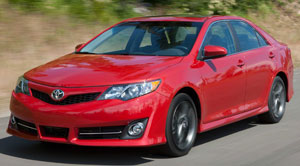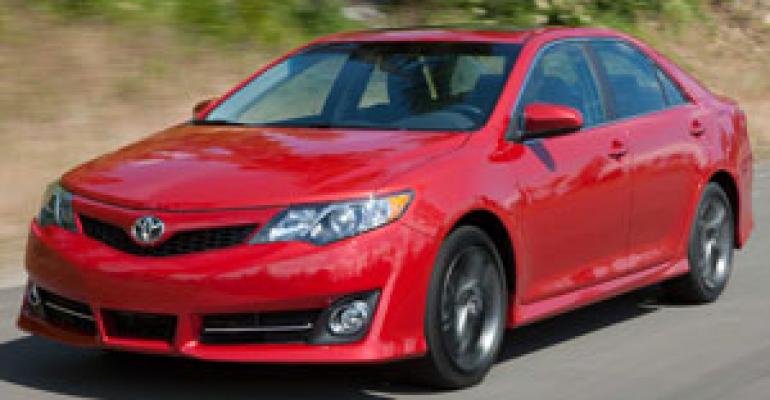
While the car may look similar to its predecessor, under its skin the seventh-generation Toyota Camry is a stronger, quieter, lighter vehicle than the one it replaces.
“We created the new Camry with a lightweight design, which contributes to better fuel economy, as well as improved handling, acceleration and enhanced braking performance,” Chief Engineer Yukihiro Okane says at a media event for the new ’12 model.

Weight reduction is the biggest difference to the non-hybrid sedan’s improved fuel efficiency. Toyota credits the use of more high-strength steel and the introduction of ultra-high-strength steel.
The auto maker says as a result of these and other measures both the 4-cyl. and V-6 ’12 Camrys have improved their estimated average fuel economy by 2 mpg (0.09 L/100 km), compared with similar models.
These lightweight steels help reduce vehicle weight anywhere from 150-200 lbs. (68-91 kg), says Joe Telmo, instructor for the University of Toyota dealer-training unit.
Toyota says there is more 440 megapascal-grade steel in the new Camry than in the outgoing model, and for the first time it’s using 590 and 980 MPa grades of steel as reinforcement for front and center pillars and rocker members.
To improve the car’s structural rigidity, there are 56 additional agility welds – 28 per side – located in the rear door frame; front door frame at the B-pillar and rocker; and in the frame underbody, among other locations.
The extra welds boost rigidity and aid in vehicle handling, resulting in improved steering response and a better rear-grip feel.
Okane found the Camry’s traditionally quiet ride to be an important reason for the car’s appeal, after conducting research among owners.
“We wanted to reduce the overall noise level in the entire cabin, and we also focused on making conversation even easier for occupants,” he says of the ’12 model.
Toyota engineers added foam to areas of the roof, in pillars and at door openings to quell wind racket and reduce vibration.
“We installed new or additional sound-absorbing materials on areas where noticeable road noise typically can creep into a vehicle,” Okane says. “We also went to the extreme to quiet noises that are near the levels of human speech.”
To tame noise from the wheel housings, sound-absorbing materials are applied to the trunk-side trim. Engineers also boosted the strength of door seals in the rocker area to increase cabin quietness.
Even the interior carpeting receives attention, with engineers retuning its “breathability” to block some sounds and allow others to flow through the material.
A thicker damping coating limits noise transmitted through the floor, Toyota says. To reduce resonance entering the cabin from the engine bay, there is a new sandwiched sheet-steel dash panel, new dash crossmember and an added dash center brace.
The dash panel also employs asphalt foam to absorb vibration energy and for more effective sound-blocking. Additionally, engineers added dash inner and outer silencers.
The former has soft and hard felt material to absorb both low- and high-frequency sounds, while the outer silencer is constructed with an air layer between the dash panel and the felt for a higher degree of sound absorption.
The ’12 Camry goes on sale Oct. 3 in the U.S. The hybrid model is due in dealerships about 30 days later.





